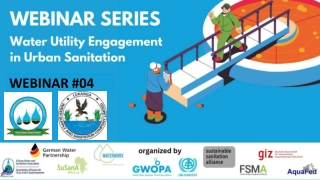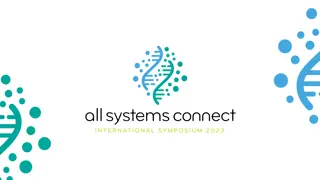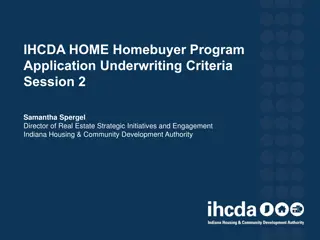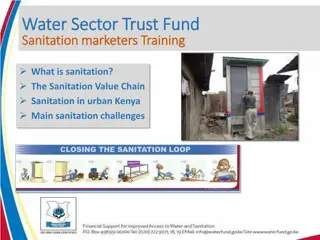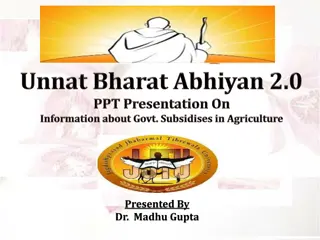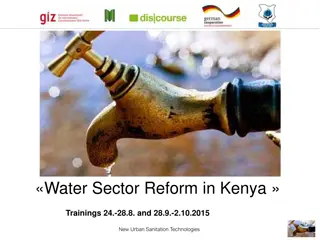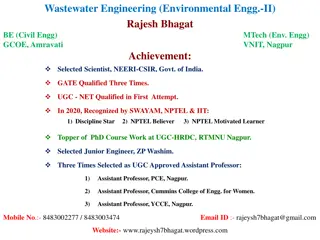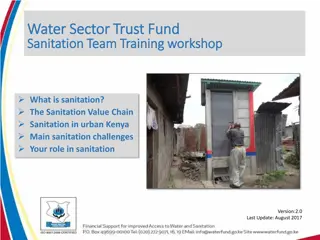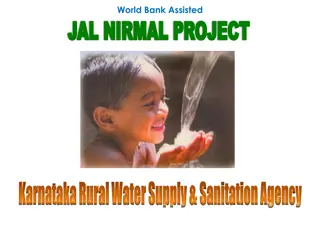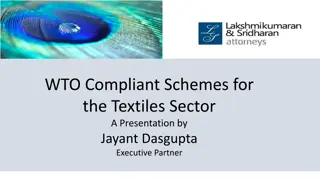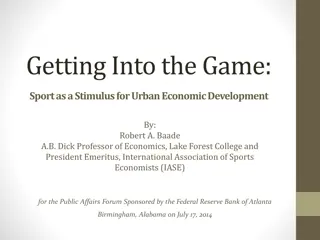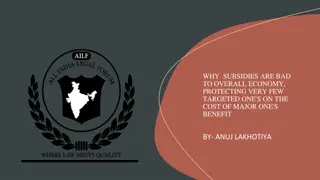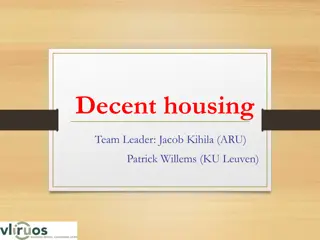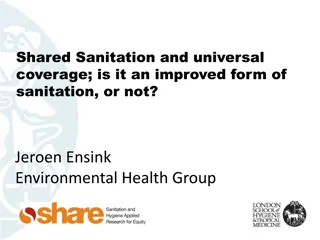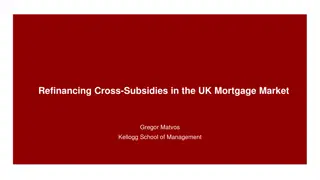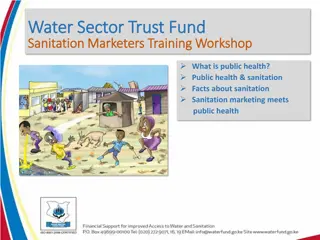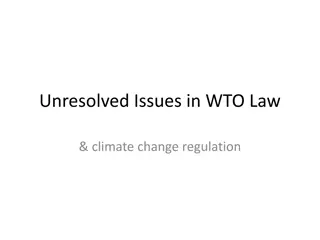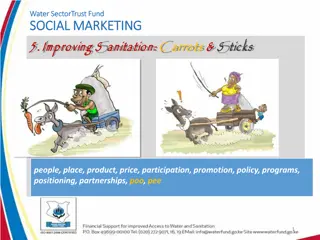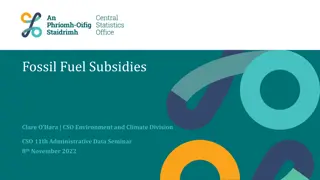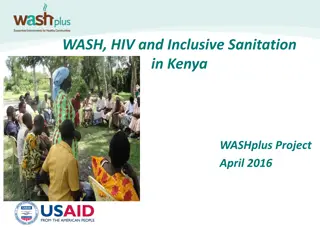Smart and Targeted Sanitation Subsidies for Inclusive Market Systems
This research explores the effectiveness of targeted sanitation subsidies in improving access to sanitation facilities for poor households in Cambodia and Ethiopia. It addresses the challenges of sustainability and inclusivity in market-based sanitation approaches, highlighting the controversy surrounding subsidies. By analyzing the impact of subsidies on different household segments, the study aims to provide insights into the most cost-effective strategies for increasing sanitation coverage.
Download Presentation

Please find below an Image/Link to download the presentation.
The content on the website is provided AS IS for your information and personal use only. It may not be sold, licensed, or shared on other websites without obtaining consent from the author.If you encounter any issues during the download, it is possible that the publisher has removed the file from their server.
You are allowed to download the files provided on this website for personal or commercial use, subject to the condition that they are used lawfully. All files are the property of their respective owners.
The content on the website is provided AS IS for your information and personal use only. It may not be sold, licensed, or shared on other websites without obtaining consent from the author.
E N D
Presentation Transcript
Sarah Custer-Lalanne (iDE) Lars Osterwalder (USAID Transform WASH) Smart and Targeted Sanitation Subsidies for Poor Households W2.3 Policy and finance addressing inclusion in market systems
Contents Introduction on Sanitation Subsidies Sanitation subsidies in Cambodia Sanitation subsidies in Ethiopia National sanitation subsidy protocol Findings of pilot study
Why sanitation subsidies? Demand-driven approaches like CLTS have had some positive results but face challenges with sustainability Market-based approaches work on demand, supply, and enabling environment, to sustainably increase access to sanitation but market-based sanitation (MBS) is not inherently inclusive and loans are not necessarily adapted to the needs of those that are unable to pay
The controversy with subsidies Subsidy = when a customer pays less for a product or service than the service provider s cost Most WASH subsidies are: Expensive - $320 billion/year Poorly targeted more than half go to the wealthiest 20% and only 6% to the poorest 20% Nontransparent opportunities for rent-seeking Distortionary threaten sustainability Source: Andres et al (2019), Doing More with Less: Smarter Subsidies for Water Supply and Sanitation
Sanitation Subsidies in Cambodia
Setting the stage By 2015, iDE Cambodia had facilitated the sale of 200,000 toilets Toilet coverage doubled across intervention provinces between 2009 to 2015 (23 percent to 56 percent) Despite success, iDE recognized that market actors were not incentivized to reach the poorest
Research design and intervention 1. Do targeted, partial subsidies increase latrine sales to poor households? 2. Do targeted, partial subsidies affect latrine sales to non-poor households? 3. Are targeted subsidies or sanitation financing options or a combination of the two the most cost-effective means of increasing latrine sales to poor households?
Results Sanitation Take-Up & Market Distortion Cost Effectiveness
2022 research: adapting subsidies for climate-vulnerable households 1. What is a practical means for identifying climate vulnerability at a household level? vulnerability assessment tool developed 2. How can this approach be used to deliver targeted sanitation subsidies to the most climate vulnerable? How effective are these climate-targeted sanitation subsidies at increasing sanitation coverage while not damaging local markets? 38% of treatment households purchased a toilet, compared to 8% of eligible households in control communities (nearly 5x more likely) No evidence of market distortion LOOKING AHEAD Compliant with the Rio Markers, in 2023 iDE is scaling up delivery of climate-resilient sanitation subsidies with climate finance from the Government of Australia through the Water for Women Fund.
Subsidies must be: SMART to ensure that they do not distort or hamper MBS and CLTSH approaches but rather contribute to overall expansion of sanitation markets TARGETED so that the subsidies address the most vulnerable population groups, who are not able to construct improved sanitation facilities on their own Available online: www.ircwash.org/sites/default/files/national_sanitation_subsidy_protocol_ethiopia_2022.pdf
Guiding principles 1) Subsidies must be well-targeted (e.g., targeting households exempted from paying the community-based health insurance) 2) Subsidies should be designed to reach a minimum acceptable level of sanitation services (e.g., targeting only latrine sub-structures and flooring solutions) 3) Subsidies should only cover a proportion of the overall cost (e.g., direct subsidies paid to a household must not cover more than 80% of the total cost) 4) Subsidies should only be introduced in places with a well-established supply chain (e.g., coverage of improved sanitation at least 50% and open defecation less than 10%) 5) The guiding principles must apply to everyone
Findings of pilot study 100% Conversion rate 80% 60% 40% 20% Full payment (25 to 45 USD) 0% Wealth quintile 1 (Poorest) Wealth quintile 2 Wealth quintile 3 Wealth quintile 4 Wealth quintile 5 (Richest) Results from 320 households in six kebeles in two woredas in Sidama region by T/WASH in 2022
Findings of pilot study 100% Conversion rate 80% 60% Medium subsidy (ca. 9 USD) 40% 20% Full payment (25 to 45 USD) 0% Wealth quintile 1 (Poorest) Wealth quintile 2 Wealth quintile 3 Wealth quintile 4 Wealth quintile 5 (Richest) Results from 320 households in six kebeles in two woredas in Sidama region by T/WASH in 2022
Findings of pilot study 100% High subsidy (ca. 2 USD) Conversion rate 80% 60% Medium subsidy (ca. 9 USD) 40% 20% Full payment (25 to 45 USD) 0% Wealth quintile 1 (Poorest) Wealth quintile 2 Wealth quintile 3 Wealth quintile 4 Wealth quintile 5 (Richest) Results from 320 households in six kebeles in two woredas in Sidama region by T/WASH in 2022
Additional subsidy research in Ethiopia Prime example of collaboration between implementing organizations and government Lessons from iDE Cambodia Ethiopia Sanitation Multistakeholder Platform National Subsidy Protocol T/WASH research and lessons Updated National Subsidy Protocol iDE research with USAID WASHPaLS #2 Further inform policy Additional research questions in partnership with USAID WASHPaLS #2: Market distortion Targeting Effect of baseline coverage levels Timeline: design phase and formative research ongoing in 2023 by iDE, T/WASH and Ministry of Health; subsidy rollout by 2024
Thanks a lot! Sarah Custer-Lalanne iDE scusterlalanne@ideglobal.org Lars Osterwalder USAID Transform WASH / IRC Ethiopia osterwalder@ircwash.org



